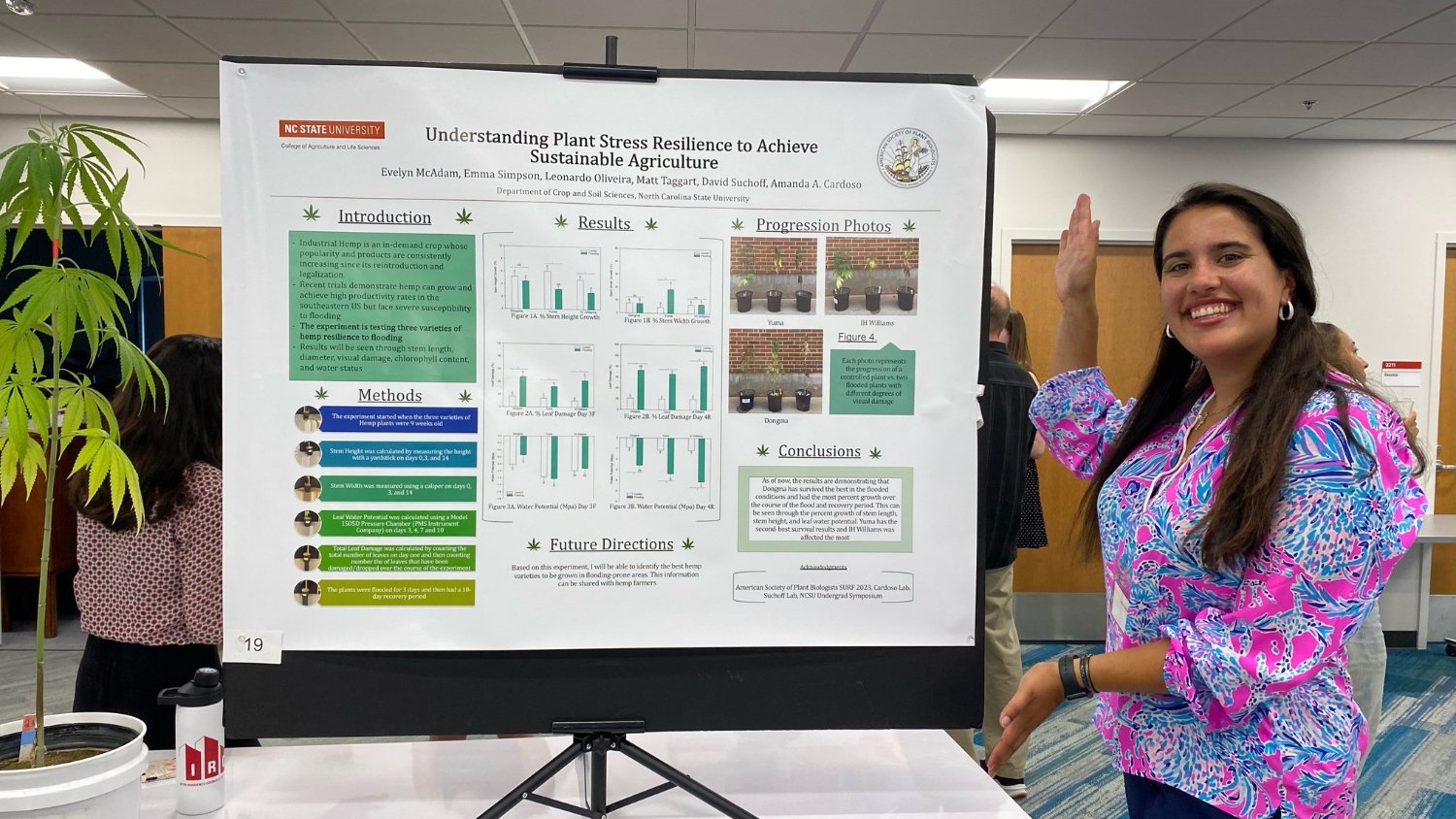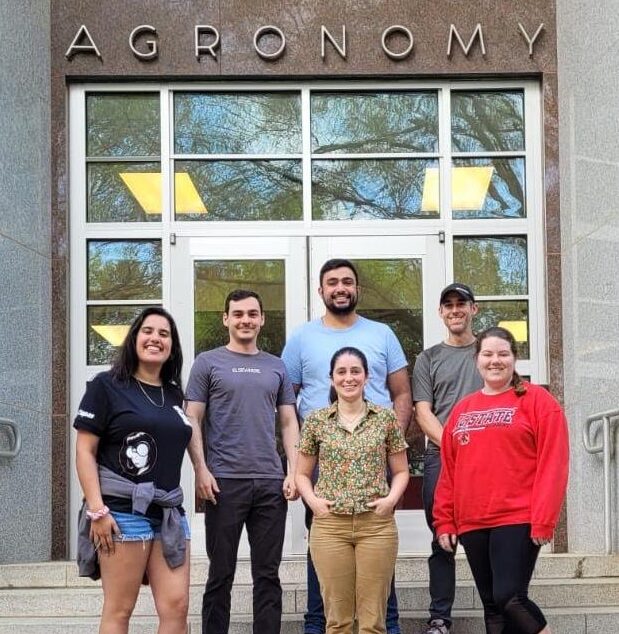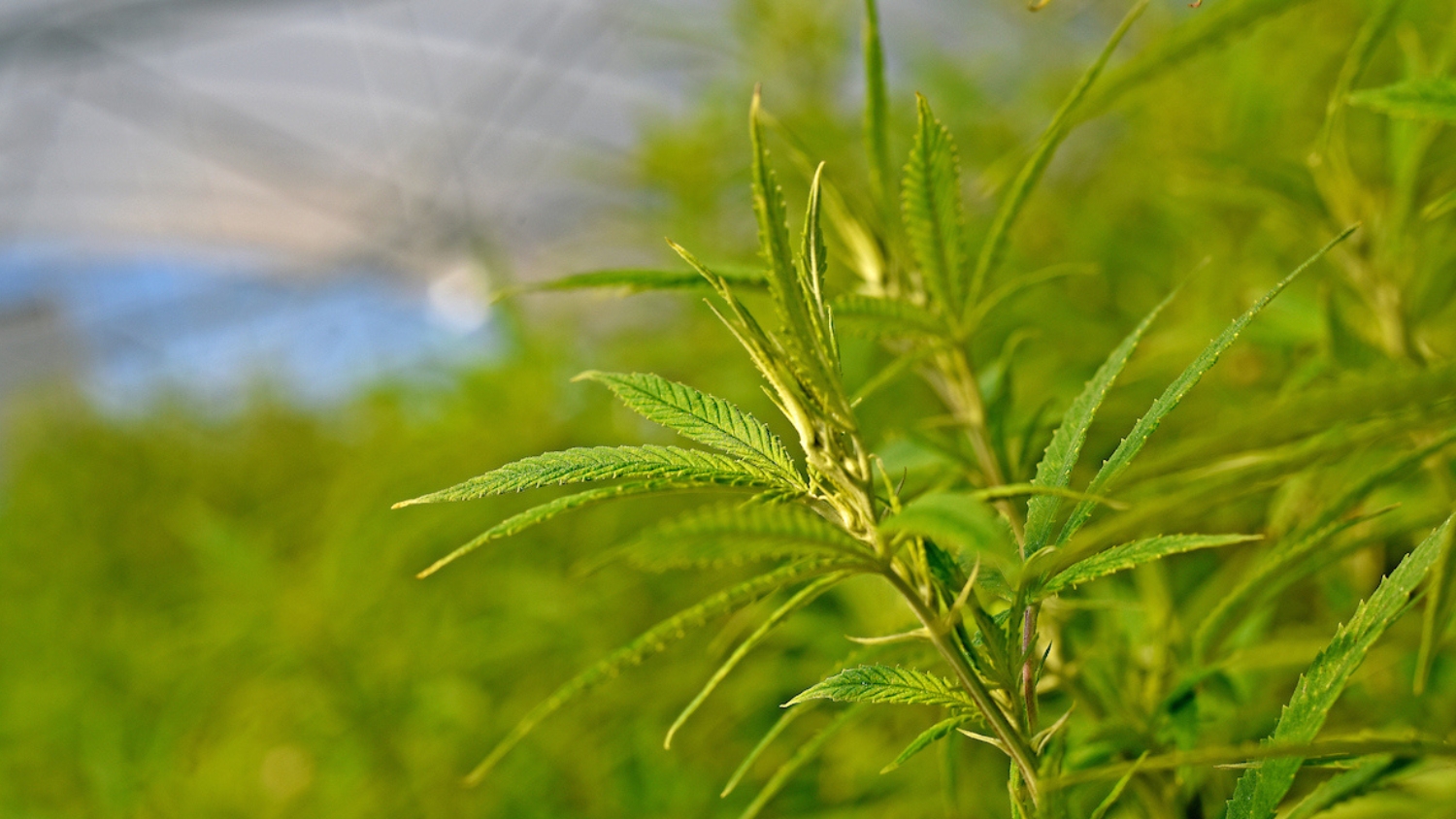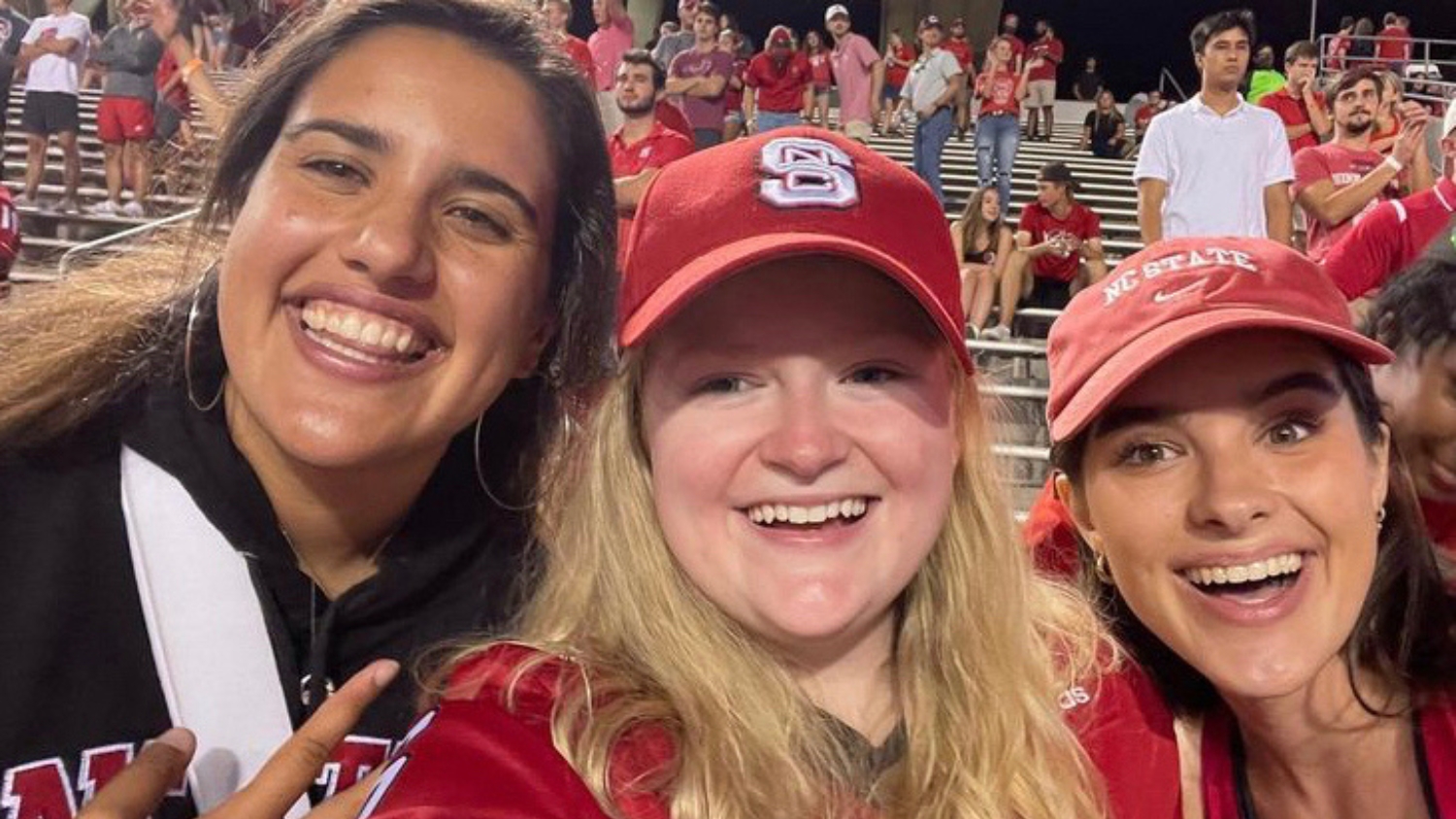Evelyn McAdam: Weaving the Fabric of Sustainable Agriculture

NC State’s Department of Crop and Soil Sciences is home to over 350 students pursuing two-year, four-year, and graduate degrees in agricultural and environmental sciences. Our mission is to connect them with the opportunities and careers that solve growing challenges.
This summer, Evelyn McAdam, a junior Agroecology and Sustainable Food Systems major, secured a unique research fellowship that funded her work in Amanda Cardoso’s crop physiology lab, researching flood response in fiber hemp.
Hear how this eco-interested, fashion-forward student went from fashion design to research design and the big career sights she’s set for corporate sustainability improvement.
Hi Evelyn, where are you from?
I’m from Barrington, Rhode Island.
What led you to NC State?
I originally visited NC State because I was interested in textiles and sustainability. I was debating between agriculture and fashion design. I experimented with sustainable fashion in high school, where I made a skirt out of reused fabric, but I never wore it again.
I’ve also always been interested in community service and reducing food waste. In a high school entrepreneurship class, my group developed a bill encouraging local restaurants and bakeries to donate unused food.
I came to realize that I was not going to be the next Parisian runway designer. So for me, I saw more opportunities in sustainable agriculture than in fashion. Sustainable agriculture is a specialized field, but still offers many pathways that let me be creative. I met the advisors from the Department of Crop and Soil Sciences and it felt like the perfect fit of a big school with a small family feel.
How did you become interested in agroecology?
I was that kid who was always picking up bugs and exploring the environment.
In high school, I attended the Maine Coast Semester School for part of my junior year. It is an immersive live-work-study program that incorporates every aspect of life into the land. I learned to weave, milk cows, compost, aggregate and store rainwater, and incorporate solar energy onto the farm. I found that being sustainable was actually fairly simple if you have the resources to implement these practices.
My sustainability interests started off mostly about the environment, but it’s becoming more about human health. I see that when you help people through nutrition and food security, you can help the earth. We can build up the environment while we’re building up people.

Are you involved in any student groups?
I’m a member of the Agronomy Club, the Agroecology Club and Sigma Alpha, a professional agriculture sorority.
As a potential fashion designer, how did you end up working in a plant lab?

I started off working with Dr. Cardoso as an undergraduate lab assistant. I helped clean up and prep input data.
Since we all have to complete an internship in crop and soil sciences, I was already looking for opportunities, and Dr. Cardoso shared this American Society of Plant Biologists fellowship opportunity with me. Most fellowships require you to be further along in your degree plan, but this one was specific to my age.
Dr. Cardoso gave me some ideas and then the reins to design and conduct my research. Sometimes, students execute a part of a bigger project already underway in a lab. But I got to be part of this from day one and knew it from top to bottom what it was all about.
I chose to work with fiber hemp because this is an up-and-coming sustainable crop that can be used in a variety of ways: paper, fiber and textiles, so it was a great fit.
Tell us about your research.
My project was testing the flood response of three varieties of fiber hemp. In the greenhouse, I seeded 72 plants, flooded them for three days and let them rest for 10 more. I observed their response over the next month. I measured the dissolved oxygen, leaf count, stomata length and overall mortality rate.
Of the three varieties I tested, the Dongma variety survived best in its visual score and lower (62%) mortality rate. Others had up to a 100% mortality rate. It really showed how one hurricane could wipe out an entire crop.
I presented my findings at the NC State undergraduate research symposium and plan to present at the Society of Plant Biologists’ annual meeting in Honolulu, Hawaii, in 2024.
Aside from the data, what did you learn from the experience?
I had little lab experience, but this really put me on the front lines of an experiment. I never realized how long research took. I didn’t know we needed so many plants for the experiment, but they all had to be the same height. Everything had to fit the scientific method.
I saw how tedious the work can be – towards the end, I spent three hours in a 100-degree greenhouse counting leaves! It broadened my idea of what research looks like. I have pre-med and environmental biology friends – all their work is in a microscope lab. But this was different, and it was greenhouse-based. And I was responsible for keeping the plants alive.

Did the experience change your academic trajectory?
I enjoyed the hands-on element of research, but I am a people person. The symposium was fun because I presented to friends and colleagues, and I love public speaking.
I hope to go on to graduate school. I enjoy learning new things and broadening my perspective. My goal is to get as broad a perspective as possible on many aspects of agriculture.
What is your career goal?
I want to have an impact. To do that, you have to go where the power is. I’m interested in policy – so maybe something in environmental health or the corporate sector.
I’d like to be a sustainability director at a large food and beverage company. Those large companies have the biggest footprint, which would put me at the forefront of addressing waste.
What’s your advice to a student considering a research opportunity?
Take a chance. Even if the work is only slightly related to your interests, it can help you narrow things down. Summer is the perfect opportunity to try new things with no long-term commitment. You will meet new people, explore life and learn more about who you are as a person.
It may be the less-stable or familiar option, but take a leap and figure the rest out along the way!
What have you learned while at NC State?
- There are endless opportunities.
- The importance of connections.
There are 30,000 people on campus. I probably run into ten a day that I know – people interested in all types of things: fashion, textiles, carbon sequestration, prelaw. I think it’s possible that any of our pathways could cross professionally. I can network and work with them again because we met here at NC State.

Picture yourself in crop and soil sciences.
If you are looking for an academic path that leads to a career of impact, consider crop and soil sciences. Our students learn from expert professors and experience hands-on adventures every day.
Learn more about our student degree pathways, including deep dives into our agronomy, soil science and turfgrass programs. Then, join us for a guided email tour of our Crop & Soil Sciences Department.
Connecting students with fruitful careers is just part of how we are growing the future.

- Categories: